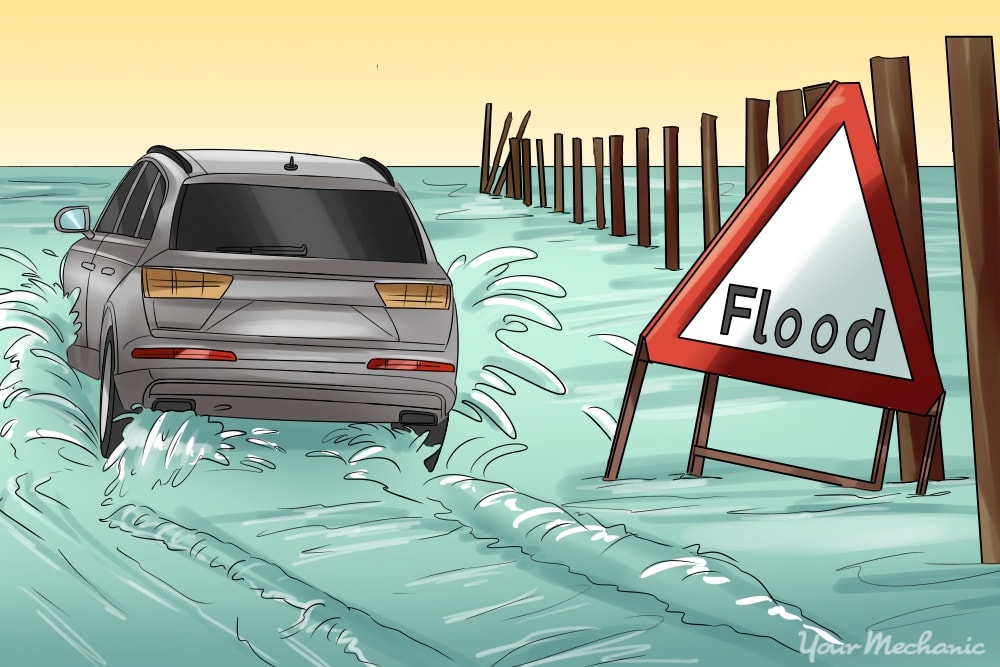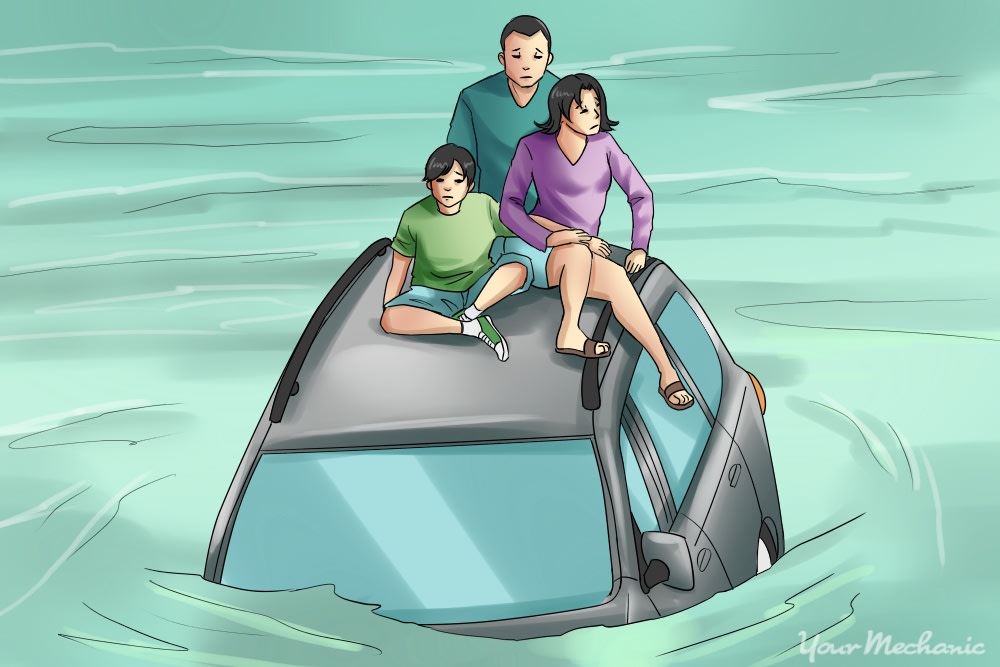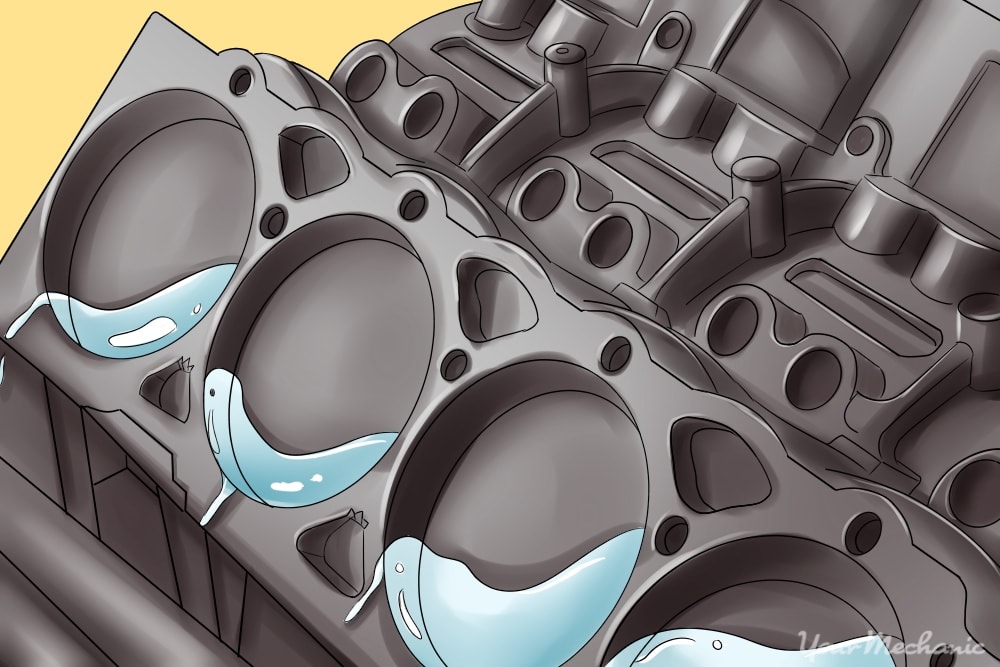

Seasonal changes can bring hazardous weather, including rain and flooding. Most of the time you should avoid driving your vehicle through standing water. In an extreme emergency, though, you might find it necessary to do so. By taking some extra precautions, you can drive through certain flooded areas more safely.
- Warning: In addition to taking certain precautions while driving through a flooded area on a roadway, you can also choose to find another route. Disaster experts warn against driving through flooded areas. If the flooded area is too deep or has a current, do not attempt to drive through it in your vehicle.
Part 1 of 5: Approach the flooded area
As you approach the standing water on the road, examine the area you plan on driving through. Before proceeding, make sure it is safe and that you know your intended path. If the flooded area does not look safe, find an alternate route and do not attempt to cross through the flooded area.
Step 1: Turn on your hazards. Turn on your hazards so that other drivers can see you.
Keep your hazards on while driving through the flooded area. Once you safely reach the other side, you can turn them off if it's still daytime.
Step 2: Check the water condition. Try to determine the water's depth and whether there is a strong current.
You should also look for any large objects floating in the water. These could potentially run into and damage your vehicle. Worse yet, they could also sweep you downstream.
If necessary, get out and physically check the body of water before driving through it. Do not proceed if the water is above the center of your tires.
- Warning: Vehicles can lose traction with the road's surface and float in less than 12 inches of water. Larger vehicles can be swept away in just two feet of water. Keep this in mind when trying to judge the height of any standing water you plan on driving through.
Step 3: Turn off the AC/heater. Turn off the air conditioner or heater.
Doing this can prevent the fan in the engine compartment from becoming damaged if it comes into contact with the flood water.
- Tip: You can open the windows slightly to promote air circulation while you are moving through a flooded area.
Step 4: Put the transmission in gear. Before entering the water, put the transmission in the highest gear if manual, or in first gear, or D1.
This helps keep the engine from changing gears, which can draw water back in through the exhaust and into the engine cylinders.
Part 2 of 5: Entering and exiting the water
After your vehicle is in the proper gear, your hazards are on, and you have checked the water to make sure it is low enough and safe enough to drive through, it is time to start driving through the flooded area. The most important part of driving through standing water is not to stop. Stopping can cause your vehicle to stall and could damage your engine if you then have to restart it.
Step 1: Drive slowly and steadily. Keeping a steady pace when driving through standing water.
Keep your foot on the gas and place your other foot on the brake to control the vehicle.
- Tip: When driving through a flooded section of roadway, drive in the middle, as that is where the road crowns and the water should be at its lowest.
Step 2: If the vehicle starts to float. If your vehicle loses contact with the road surface, open the car door and let some of the flood waters in.
While this might ruin your carpeting, it should also weigh the vehicle down and allow the tires to get a grip again. If you have a passenger, have them open their door instead.
Step 3: Exit the water. After you have reached the other side and your vehicle has started to come out of the water, you can speed up gradually to leave the flooded area.
Make sure your vehicle has cleared the water before stopping to check it.
To dry the brakes, in case they got wet, touch the brake pedal lightly with your left foot while driving slowly.
Part 3 of 4: What to do if your vehicle stalls in water
Unfortunately, one of the risks you take when driving through a flooded area is your vehicle stalling. Once this happens, you have a few options. Hopefully, you are able to get the vehicle restarted and can continue on your way. If not, then you need to take specific actions to stay safe.
Step 1: If your vehicle stalls. If your vehicle stalls while driving through a flooded area, keep some simple precautions in mind.
If the water is above the exhaust pipe, consider not attempting to restart the engine. Restarting the vehicle can suck water back through the exhaust and into the cylinders.
Not restarting and abandoning the vehicle might be your best alternative at this point. Hopefully, the water will subside allowing you to restart and retrieve your vehicle once the water is below the exhaust pipe.
Step 2: If the water continues to rise. If your vehicle has stalled and the water continues to rise, consider abandoning the vehicle.
If you must abandon the vehicle and the water is too high to cross, call 911 for help on a cell phone or signal for help from passersby.
You should also get to the highest point you can, which in most cases is the roof of the vehicle.
Part 4 of 4: Check your vehicle
If your vehicle stalled while crossing a flooded area, you need to get it checked out for damage. You can either do the job yourself if you are confident enough. Or you can get a trusted mechanic to check your engine for water damage and help get your vehicle fixed and back on track.
Step 1: Remove the spark plugs or injectors. If you are mechanically inclined, remove the spark plugs or injectors.
Turn the engine over to expel any water from the cylinders.
Reinsert the spark plugs or injectors and start the vehicle.
Step 2: Dry out the car. If water got inside of your vehicle's passenger compartment, you need to clean and dry any wet carpeting or upholstery.
One option is to take your vehicle to a professional detailer. They can remove the moisture and remove any mildew smell that might occur from water damage.
By following the above guidelines, you can stay safer while traversing standing water. If for some reason your vehicle stalls and suffers damage from taking water into the engine, seek the services of an expert mechanic to get your vehicle running again and back on the road. If you have any questions about water damage to your engine, you can Ask a Mechanic to find out more about what you can have done to fix the problem.







